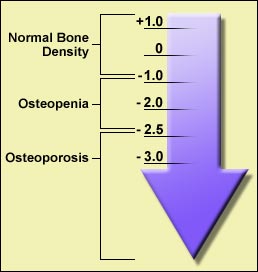Understanding the T-Score: A Comprehensive Guide to Interpreting Bone Density Results
Introduction:
Hey there! Have you recently received your bone density test results and wondered what that mysterious T-score means? Well, you’re in the right place! In this comprehensive guide, we’ll delve into the world of T-scores, unraveling their significance, understanding the factors affecting them, and providing valuable suggestions for maintaining optimal bone health. So, let’s jump right in!
1. What is Bone Density?
When it comes to understanding the T-score, it’s essential to grasp the concept of bone density. Bone density refers to the amount of mineral content, primarily calcium, packed into your bones. It plays a crucial role in determining their strength and resistance to fractures.
2. The Basics of T-Scores
The T-score is a measurement used to assess an individual’s bone density in comparison to the average peak bone density of a healthy young adult population. It provides a standardized value, indicating how much your bone density deviates from the average. Positive values suggest higher bone density, while negative values indicate lower density.
3. Interpreting T-Scores
T-scores are categorized into three main groups: normal, osteopenia, and osteoporosis. A T-score above -1 is considered normal, between -1 and -2.5 indicates osteopenia (low bone density), and below -2.5 signifies osteoporosis (severely low bone density). These scores provide a basis for understanding your fracture risk and determining appropriate preventive measures.
4. Factors Affecting T-Scores
Various factors can influence your T-score, including age, gender, ethnicity, hormonal changes, lifestyle choices, and underlying medical conditions. Understanding these factors is crucial for accurate interpretation and appropriate management of your bone health.
5. Fracture Risk Assessment
T-scores are not the sole determinants of fracture risk. Other factors, such as age, family history, previous fractures, and lifestyle choices, contribute to the overall assessment. Combining these factors with your T-score allows healthcare professionals to estimate your risk of experiencing a fracture in the future.
6. Lifestyle Modifications for Optimal Bone Health
Maintaining healthy bones goes beyond T-scores alone. Adopting certain lifestyle habits can significantly contribute to optimal bone health. Engaging in weight-bearing exercises, consuming a balanced diet rich in calcium and vitamin D, avoiding tobacco and excessive alcohol consumption, and practicing fall prevention strategies are essential for preserving bone density.
7. Medical Interventions for Osteoporosis
In cases where osteoporosis is diagnosed, various medical interventions can help manage the condition. Healthcare professionals may recommend medications, such as bisphosphonates, hormone therapy, or monoclonal antibody treatments, to slow down bone loss and reduce fracture risk.
8. Monitoring and Follow-Up
Regular monitoring of your bone density is essential, especially if you’ve been diagnosed with osteopenia or osteoporosis. Follow-up bone density tests help assess the effectiveness of interventions and guide further management decisions to prevent fractures and maintain optimal bone health.
Conclusion:
Congratulations! You’ve gained a comprehensive understanding of the T-score and its significance in assessing bone density. Armed with this knowledge, you’re better equipped to interpret your bone density test results, estimate fracture risk, and take proactive steps towards maintaining strong and healthy bones.
FAQs:
Q1: Can I have osteoporosis even with a normal T-score?
A1: Yes, it’s possible. While a normal T-score suggests bone density within the average range, other factors, such as age and lifestyle choices, can contribute to the development of osteoporosis.
Q2: Are T-scores the same for men and women?
A2: No, T-scores differ between men and women. Women generally have a lower peak bone density, making them more prone to osteoporosis.
Q3: Can I improve my T-score?
A3: While you can’t change your T-score directly, adopting a healthy lifestyle, including regular exercise, a balanced diet, and adequate calcium and vitamin D intake, can help improve overall bone health.
Q4: How often should I have a bone density test?
A4: The frequency of bone density tests depends on your age, risk factors, and previous results. Generally, postmenopausal women and men over 50 should consider testing every 2-3 years.
Q5: Are T-scores the only consideration for fracture risk?
A5: No, fracture risk assessment involves multiple factors, including T-scores, age, family history, and lifestyle choices. A comprehensive evaluation is necessary for accurate risk estimation.




